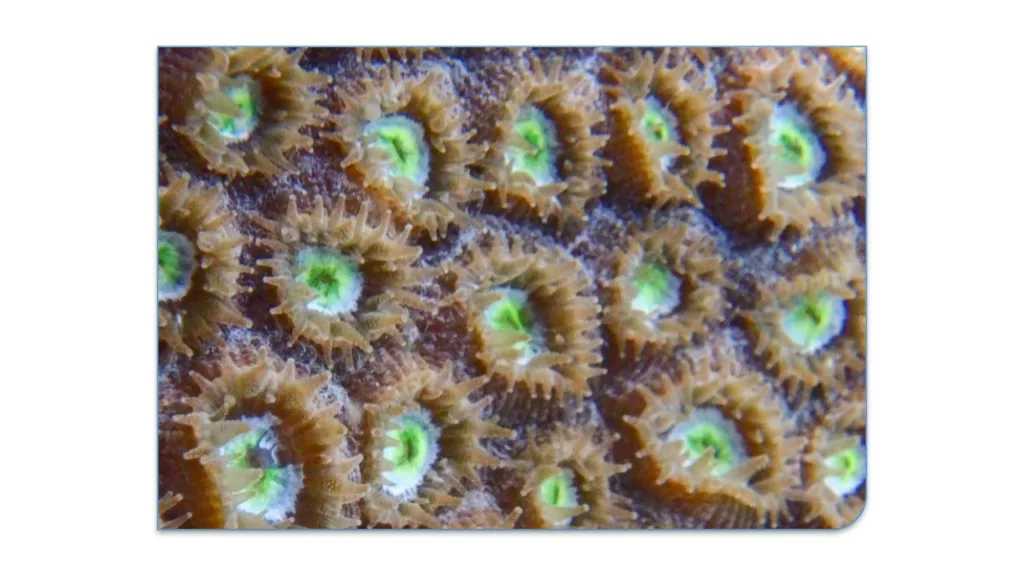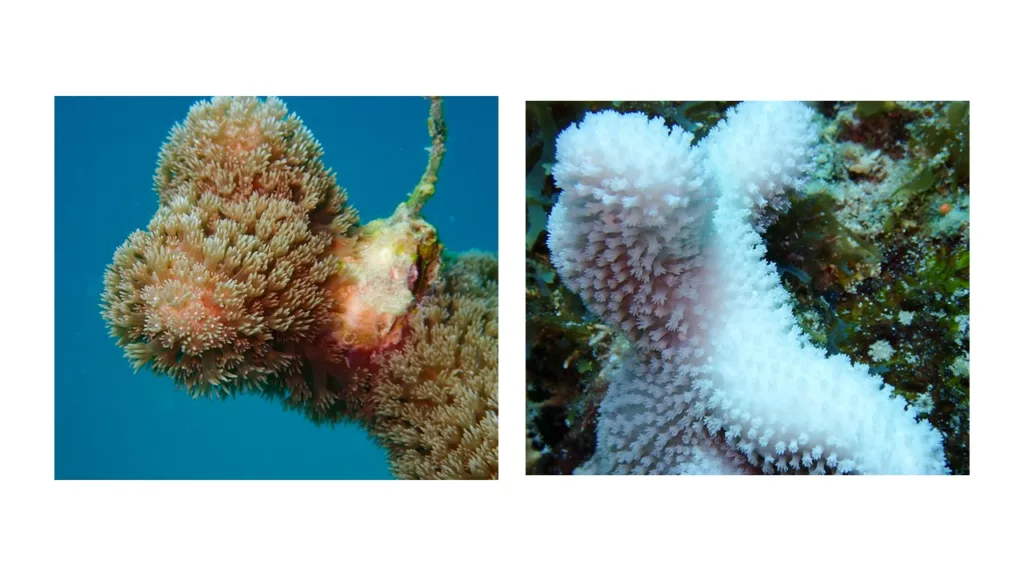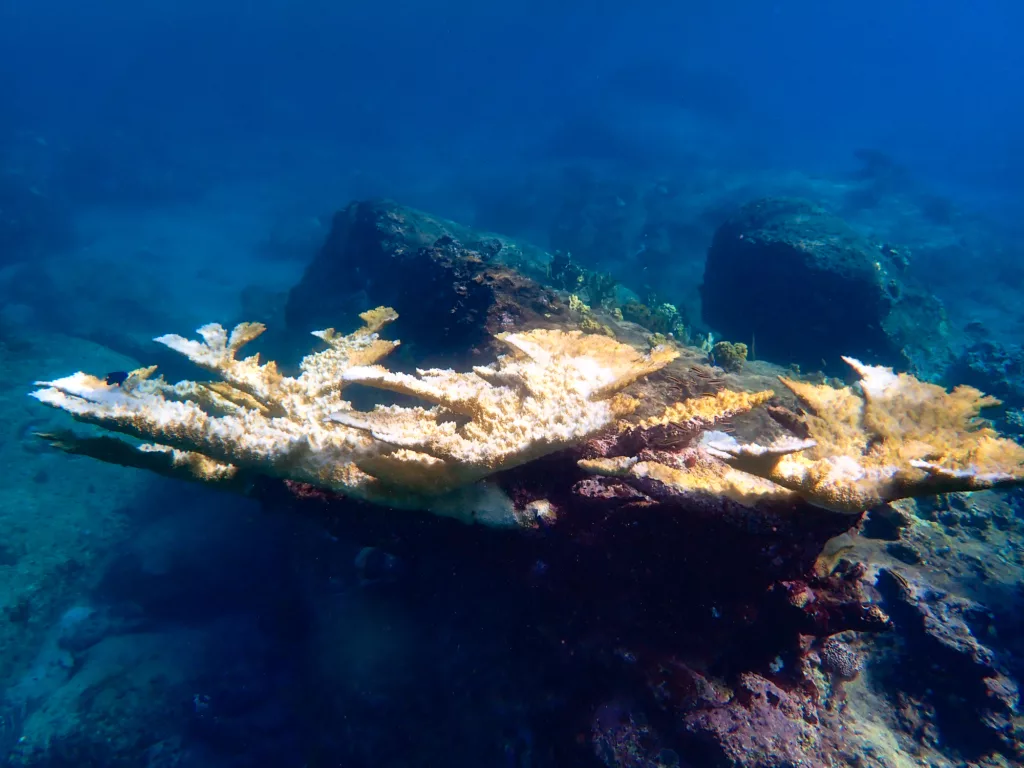| Issue | Our Coral Reefs are facing an existential threat from the impacts of Coral Bleaching. |
| Problem | Sea temperatures have become extremely elevated because of the impacts from human-induced climate change. |
| So What? | Under this excessive heat, corals expel their zooxanthellae, which reduces their ability to feed, and can lead to starvation and death. |
| Solutions | We need to do more to reduce the impacts of Climate Change and increase the resilience of ecosystems through improving the effectiveness of environmental management. |
| Benefits | Healthy coral reefs help to protect our shorelines, provide food security, and support immense biodiversity. |
This summer was hot. Really hot! Like, uncomfortably hot. Like you go to the beach and the water feels borderline like a sauna hot. The heat felt over this summer period was record breaking and given the impacts of human induced climate change, there is a high chance that this will be the new normal. Unfortunately, this heat was not just limited to making us feel uncomfortable, but also had significant impacts on the ecosystems found around Antigua and Barbuda. The worst affected ecosystem from the heat were coral reef ecosystems and this had a lot to do with their biology.
Coral reefs are formed by tiny translucent animals called coral polyps (think something that looks like an upside-down jellyfish), which grow in colonies which can number in the thousands and secrete calcium carbonate (limestone/white rock) as they grow. These coral polyps use filter feeding to gather nutrients from the surrounding water column. The clear turquoise waters of the Caribbean are however very low in nutrients, and thus the coral polyps are unable to garner sufficient food via the filter feeding process. To combat this, the coral polyps enter a symbiotic relationship with an algal group called zooxanthellae. These zooxanthellae live within the tissue of the coral polyp, and through the process of photosynthesis, help to supply the nutrients needed for the coral polyps to survive. Additionally, you should know that as the coral polyps are translucent, the color you see in coral reefs is provided by the zooxanthellae living within the tissues.



Coral polyps are extremely sensitive animals and start behaving weirdly when they get stressed. What makes coral polyps stressed? Various elements inclusive of Pollution, Eutrophication, Desiccation (Dehydration) and temperature change. Temperature can really affect the physiology of coral polyps as they have a temperature range within which they live. Once the temperature exceeds (or goes below) this range, coral polyps expel their zooxanthellae. This results in two things. First, this reduces the amount of nutrients being supplied to the coral polyp. Second, the corals then appear pale or white, because their translucent bodies now allow you to see their white skeleton. This process, where a stressor has caused coral polyps to expel their zooxanthellae and take on a whitish “bleached” look, is called Coral Bleaching.
Coral bleaching is not inherently a death sentence for the coral organisms it affects. What it essentially means is that the health of the coral has been compromised, due to it not being able to secure sufficient nutrient supply, and it is now more vulnerable to biological (eg diseases) and physical (eg abrasion, algal overgrowth) stressors. The presence of these additional stressors can then cause the death of bleached corals. Additionally, bleached corals can also die due to the process of starvation. The longer the coral remains bleached for, the longer it goes without sufficient nutrients, which can lead to their deaths. The length of time that it takes for a coral to “starve to death” depends on a few factors, but there is no set standard. Genetics play an important role here as different coral species (and their associated genotypes and type of zooxanthellae) can survive for different periods. Additionally, local conditions, such as current, depth, overall reef health, etc, can all play a role in the length of time that a bleached coral survives.
Stay tuned for Part 2 where I’ll dive into more about what we have seen over the summer of 2023, and what it means for us going forward.

